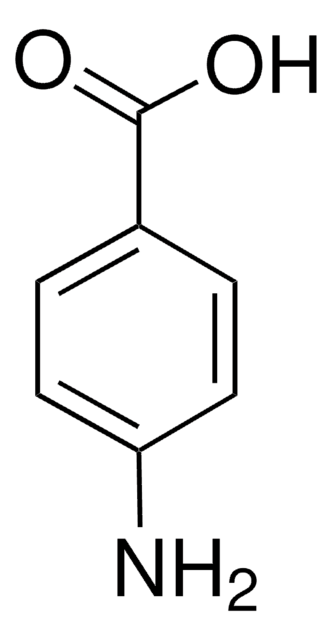O6503
L-Ornithine monohydrochloride
BioReagent, suitable for cell culture, ≥99%
Synonyme(s) :
(S)-2,5-Diaminopentanoic acid monohydrochloride
About This Item
Produits recommandés
Source biologique
microbial
Gamme de produits
BioReagent
Pureté
≥99%
Forme
powder
Conditionnement
pkg of 100 g
pkg of 25 g
Technique(s)
cell culture | mammalian: suitable
Impuretés
ammonia and citrulline, essentially free
Solubilité
H2O: soluble 50 mg/mL, clear, colorless to very faintly yellow
Chaîne SMILES
Cl.NCCC[C@H](N)C(O)=O
InChI
1S/C5H12N2O2.ClH/c6-3-1-2-4(7)5(8)9;/h4H,1-3,6-7H2,(H,8,9);1H/t4-;/m0./s1
Clé InChI
GGTYBZJRPHEQDG-WCCKRBBISA-N
Vous recherchez des produits similaires ? Visite Guide de comparaison des produits
Description générale
Application
- as a supplement in Dulbecco′s modified eagle medium (DMEM) for cell growth assays
- as a component in the standard medium for primary human hepatocytes (PHH) culture
- as a creatine synthesis inhibitor
Actions biochimiques/physiologiques
Autres remarques
Code de la classe de stockage
11 - Combustible Solids
Classe de danger pour l'eau (WGK)
WGK 1
Point d'éclair (°F)
Not applicable
Point d'éclair (°C)
Not applicable
Équipement de protection individuelle
Eyeshields, Gloves, type N95 (US)
Certificats d'analyse (COA)
Recherchez un Certificats d'analyse (COA) en saisissant le numéro de lot du produit. Les numéros de lot figurent sur l'étiquette du produit après les mots "Lot" ou "Batch".
Déjà en possession de ce produit ?
Retrouvez la documentation relative aux produits que vous avez récemment achetés dans la Bibliothèque de documents.
Les clients ont également consulté
Notre équipe de scientifiques dispose d'une expérience dans tous les secteurs de la recherche, notamment en sciences de la vie, science des matériaux, synthèse chimique, chromatographie, analyse et dans de nombreux autres domaines..
Contacter notre Service technique









